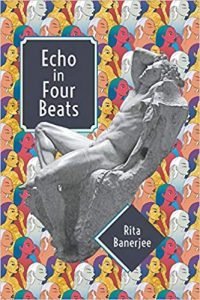Pauline Jansen Van Rensburg at The Quarterly Conversation:
 Whilst Banerjee recognises the beauty and utility of traditional forms, she plays with a multitude of poetic and thematic forms, pirouetting from the profane to the sacred, the mundane to the sublime, the broadly public to the deeply profound and personal with the ease of a virtuoso. Haiku is placed alongside sonnets and ghazals, interspersed with erasure, hymns, mistranslations and vers-libre to give birth to different metronomic languages and rhythms that create a new voice. Banerjee´s linguistic artfulness resides in her ability to translate all these foreign words, cultures, and geographies into a coherent language of aesthetic, philosophical, and political portent. As seen in the haiku “A Waters Sound” where the entrenchment of social conventions and power structures is metaphorically conveyed by the image of a deep, leaf-grown well from which potential young feminists are blocked from jumping out by the wire-meshed sky. The Japanese ideograms of the original poem drip silently down the face of the page, creating and holding a meditative space for the reader to ruminate upon the depth of the well.
Whilst Banerjee recognises the beauty and utility of traditional forms, she plays with a multitude of poetic and thematic forms, pirouetting from the profane to the sacred, the mundane to the sublime, the broadly public to the deeply profound and personal with the ease of a virtuoso. Haiku is placed alongside sonnets and ghazals, interspersed with erasure, hymns, mistranslations and vers-libre to give birth to different metronomic languages and rhythms that create a new voice. Banerjee´s linguistic artfulness resides in her ability to translate all these foreign words, cultures, and geographies into a coherent language of aesthetic, philosophical, and political portent. As seen in the haiku “A Waters Sound” where the entrenchment of social conventions and power structures is metaphorically conveyed by the image of a deep, leaf-grown well from which potential young feminists are blocked from jumping out by the wire-meshed sky. The Japanese ideograms of the original poem drip silently down the face of the page, creating and holding a meditative space for the reader to ruminate upon the depth of the well.
more here.
